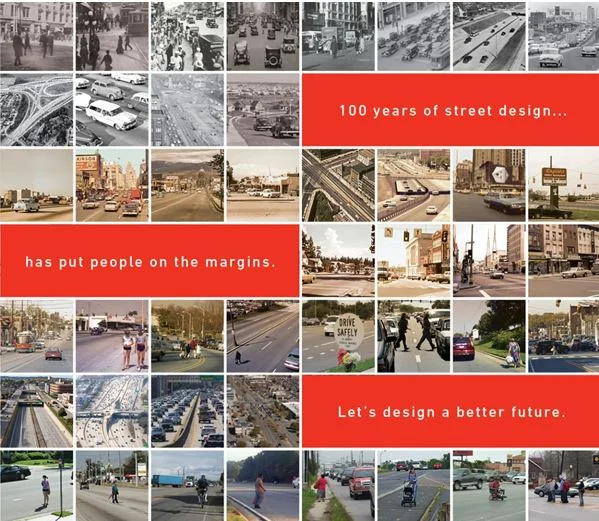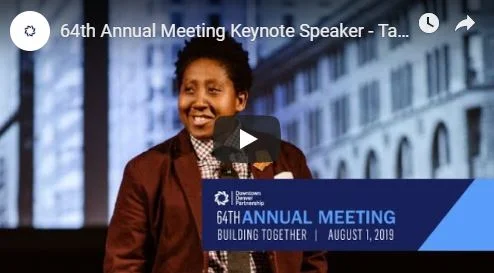Yesterday at Toole Design we launched the New E’s. Our President, Jennifer Toole, stated that:
The conventional Three E’s approach of engineering, education, and enforcement, first introduced in 1925, doesn’t provide the guidance or moral compass we need to plan, design, and build a transportation system for the 21st century. We must look beyond traditional professional disciplines and across conventional boundaries to make our streets safe and comfortable for everyone.
It’s time for a new approach to transportation that is centered on the values we want to see reflected in our communities. We need to view transportation as the vital means of attaining health, happiness and fulfillment, not as an end in itself.
Since then there has been a ton of positive response. There has also been some skepticism on if this can work and how it will look for places that might not be ready to do things differently. Part of why I joined Toole Design is because I realized it was a place with people who didn’t just wait for others to be ready to do the right thing. We help people get to the ethically right and equitably just place with empathy and patience. We didn’t embark on this journey with the New E’s because we thought it would be easy. We did it because these are the values that ground and lead our work. We did it because it’s what is right. The changes we want to see won’t happen overnight. It’ll take hard work. There will be mistakes. But we won’t stop striving to be better. Unveiling this new campaign wasn’t the end goal. It was just the beginning. I’m excited to see what’s next. But for now, here are a few of my thoughts on equity. More to come. More work to do.
It’s a common scenario: transportation planners, who are mostly white, male, and able-bodied and have spent relatively little time with people who are different than them, ask themselves how to bring more people of color and more low-income people to the table. They question why more women don’t show up to their meetings. They don’t think about the accessibility of their space or written materials, but wonder: “How do we get more people in this room?”
The reality is that the room these transportation planners and engineers want more people in simply is not the right room.
From redlining to urban renewal to Jim Crow, many communities across North America have been excluded from the decision-making process that shaped their built environment, and that built environment has in turn cut these groups off from access to opportunity. As transportation professionals, we wonder why “the public” doesn’t understand our work or speak our language, when we should be trying to make sure we make our work accessible, relatable, culturally competent, and linguistically appropriate.
Our country was built on a foundation of racism, inequity, and making sure certain groups of people were kept on “the other side of the tracks.” These inequities are alive and well today, and continue to be closely tied to race. So why would we expect people to come to us if we only hold meetings during the daytime, or don’t offer daycare or refreshments, or have the meeting notices and materials available only in English?
We can and should make our meetings better, but we also need to realize that no matter how many changes we make, the communities we want to reach are already gathering, before we ever show up. Instead of making them come to us, it’s time for us to go to the high school football game, or farmers’ market, or swamp meet, or church picnic. It’s time to for us to figure out how to show up differently, in community spaces, and learn new ways of talking about our work. We have to be willing to go outside our comfort zones to be with the people we say we want to help.
Beyond that, are we willing to acknowledge that we aren’t always the experts? The data we use and our years of training provide us with valuable knowledge. But we also have to realize that our most valuable asset is the ability to listen and appreciate. Listen to the community experts who are on the frontlines of dealing with our decisions each and every single day. Appreciate the expertise that is formed from being in the community and experiencing how our work impacts people. We must realize that not all expertise comes with a degree. Once we are able to listen and appreciate, we can expand our definition of expertise and compensate those who have the most to offer—especially when what is being requested is their time away from family, work, and other responsibilities.
Equity means distributing resources to people in a just and impartial way. It’s not giving everyone the same thing, but rather giving everyone what they need today while considering how existing power structures have governed resource distribution in the past. Not everyone has equitable access to safe, comfortable, affordable, and healthy transportation options, and the burden of isolation, disconnection from economic centers and services, and traffic violence are not shared equally.
The beauty of our profession is that we have the tools to help people connect and move freely. Yet we often fail to acknowledge that this profession—and those same tools—have been used to keep people apart and stifle mobility. To make transportation equitable, we must commit to addressing historical and present-day inequities as we move together towards mobility justice.
That commitment can, and should, start with each of us. How will you address inequities in your work?
Director of Planning, California | Director of Diversity and Inclusion
See more and read about all of the new E’s on the Toole Design website…



















